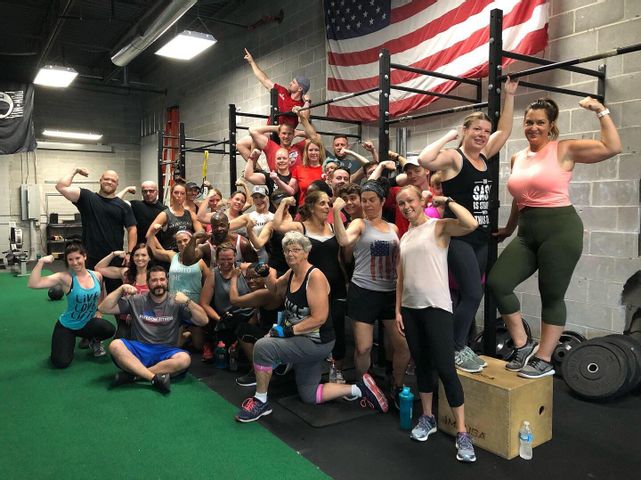
Often times the simple basics of nutrition are overlooked when we consider evaluating our nutritional intake. As many of us are inevitably getting ready to start a “diet” for the new year, we figured it would be a good time to discuss the basics. While there are many complex factors that go into nutrition, sometimes we get lost in the minor aspects and forget the major take-homes. Hopefully, we can get you to make some changes to improve your body composition or help aid in weight loss.
First off, let discuss the 3 macronutrients the body recognizes. Everything we eat is made up of one or more of the following: protein, carbohydrates, and fat. These are the three main macronutrients, and our body breaks these down into amino acids, glucose, and fatty acids, respectively. The energy derived from these foods is as follows: Protein=4cal/g, Carbs4cal/g, and Fat 9cal/g. In general, we can think of protein as a builder, carbs as energy and fat as fuel to cellular processes. One side note is that Protein is thermogenic, meaning it takes more “energy” for our body to break down and use. Unfortunately, nothing in nutrition is this simple, (sigh) but this is a good basic start for our foundation.
Secondly, we have our micronutrients, which are primarily vitamins and minerals. We have fat-soluble (A, D, E, K) and water-soluble vitamins. There is not a need to discuss this in too much depth here. However, know that the lower the quality our food sources become, typically the more it lacks in micronutrients. It seems common sense that a Fried Oreo (although delicious) does not hold as much nutrient value as say a cup of rice. So the take-home for the continuation of the article is that both Quantity and Quality are important!
Let’s go ahead and cross the Quantity bridge to get some numbers thrown out there. Again, these are not perfect for every person but, are generally a good start as I have found through trial and error. In general, the more active you are the more carbs you will need and conversely the more sedentary you are the fewer carbs you need. Simple car analogy: If you drive around a big block Chevy you are going to use a lot of (expensive) gas. However, if you have a nice little, tiny, itty bitty smart car you will not use as much. The size of the engine in our car is in relation to the amount of muscle mass we have. More muscle=more energy spent. Without further delay here is what I have found helpful to start guesstimating total caloric intake along with macronutrient breakdown.
Inactive or weight loss 8-11 calories per pound of body weight
(Ex 200lb=2,000calories)
Protein= 1g/lb of bodyweight
Carbs= .6-1g/lb of bodyweight
Fat= Leftover caloric total.
Ex= 200lb person=2,000cals, (200g Pro=800cal, 140g Carbs=560cal, 71g Fat=640cal)
Active or weight gain 16-20 calories per pound of body weight
(Ex 200lb=4,000calories)
Protein= 1-1.4g/lb of bodyweight
Carbs= 1.5-2g/lb of bodyweight
Fat=Leftover caloric total.
Ex= 200lb person=4,000cals, (280g Pro=1,120cal, 400g Carbs=1,600cal, 142g Fat= 1,280cal)
Now that we have hammered out some steps to take on the Quantity front. Let’s discuss how to improve our food Quality. We have found a very simple way to do this is to try and eat only single-ingredient foods. Pretty simple process, if the food you’re eating has multiple ingredients eliminate it from your diet (check the nutrition label to view this info). Once you have improved your body composition and/or quality of your foods you can then re-introduce some of the old foods and see how they affect you. Things that are commonly removed (and unfortunately delicious) during this phase include:
-
bread, pasta, heavily processed meats, processed nuts, nut butters, chips, meal replacement bars, sugary drinks, cake, doughnuts, ice cream, frozen yogurt, Orange Leaf…….getting sidetracked here and really craving some Fro Yo!
Generally, we have found that when someone can really focus and improve on his or her nutritional quality the quantity magically starts to look like what we discussed above. Once someone has significantly changed the quality of food they can then start measuring and weighing their food intake so we can see what the macronutrients look like. Usually, this is only something you should do for a week or two until you are really good at eyeballing portion sizes. My Fitness Pal is an easy app to track because it gives a really simple to read breakdown and can be shared with your trainer or friends.
As stated above, nothing in nutrition is simple. The same plan will not work for everyone. However, if you can improve the quality of your food intake over time you will likely see results for a while just from that. When those results cease or slow you can look at the quantity to keep driving the results forward. Just please don’t get lost in the HOCUS POKUS DIETS out there!
Next up is a healthy food choice list/meal timing/frequency/adjustments/supplements.
About the Business
Have a question? Ask the experts!
Send your question

